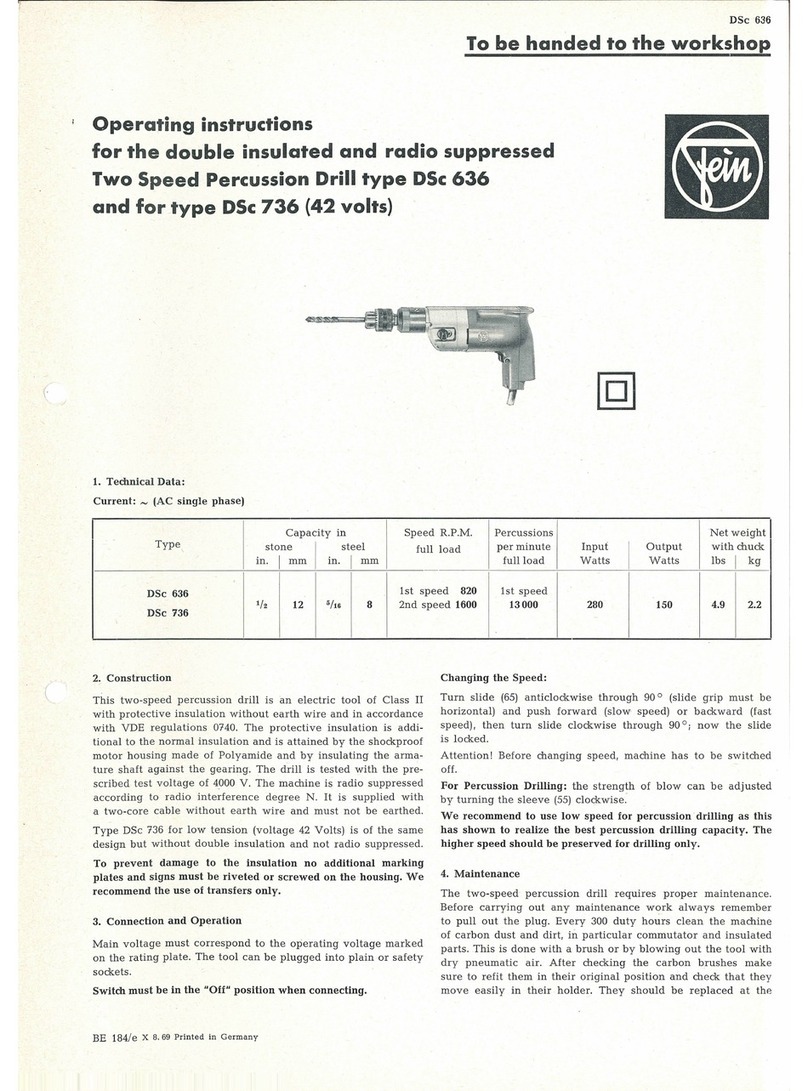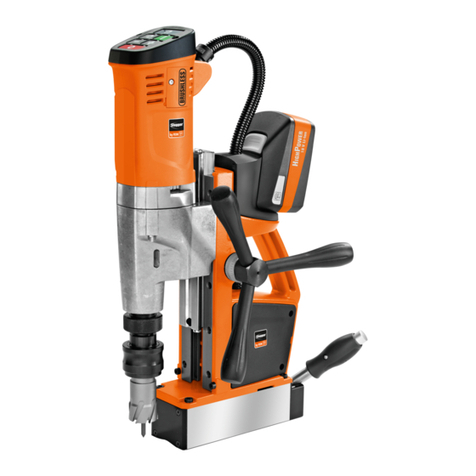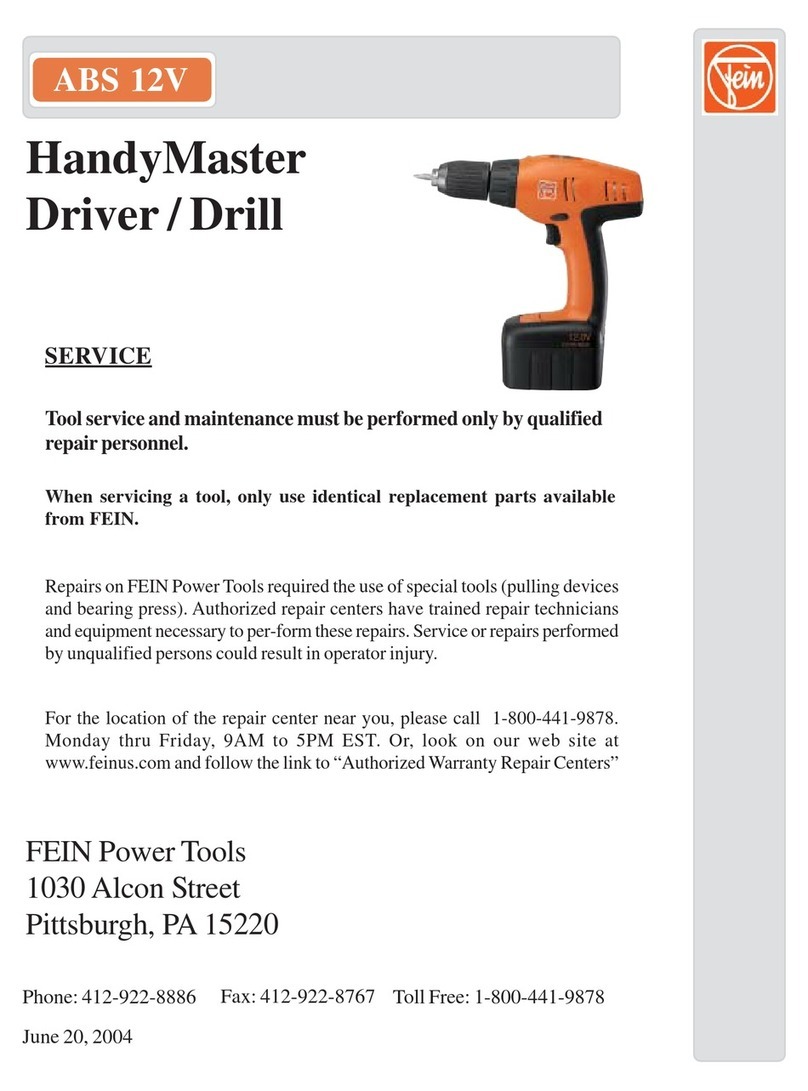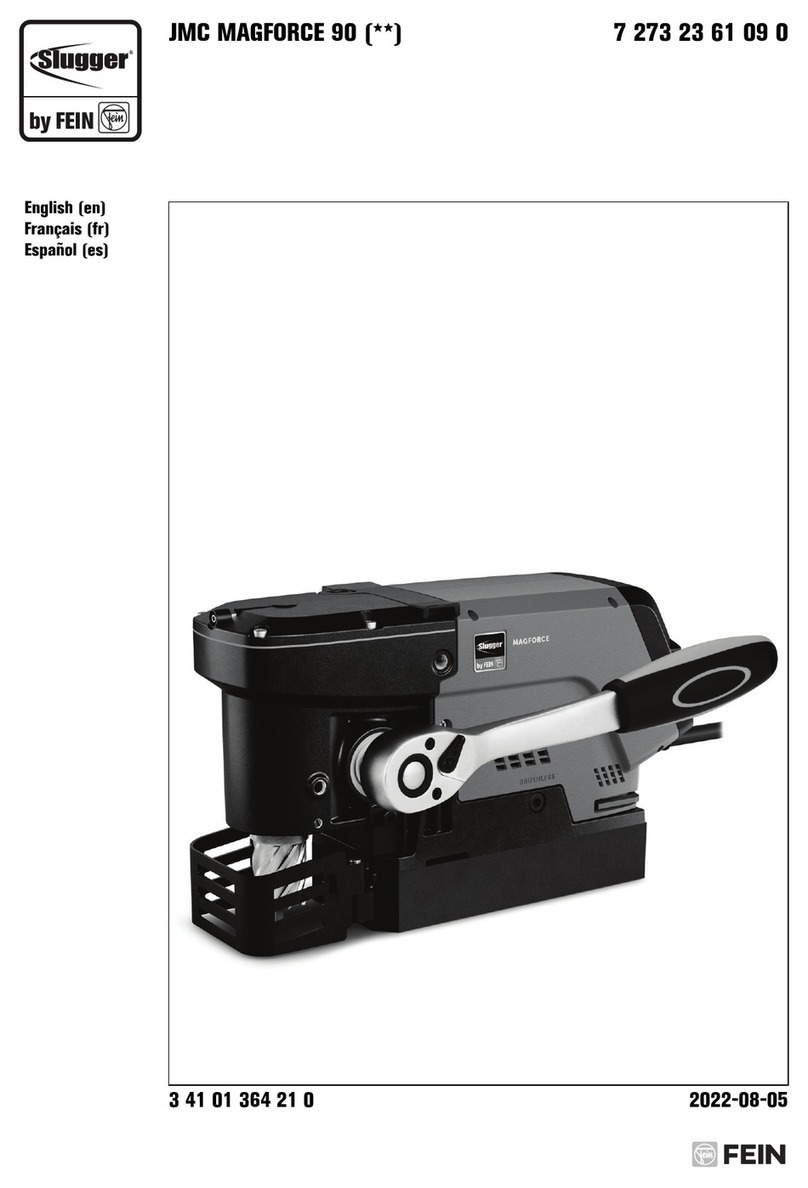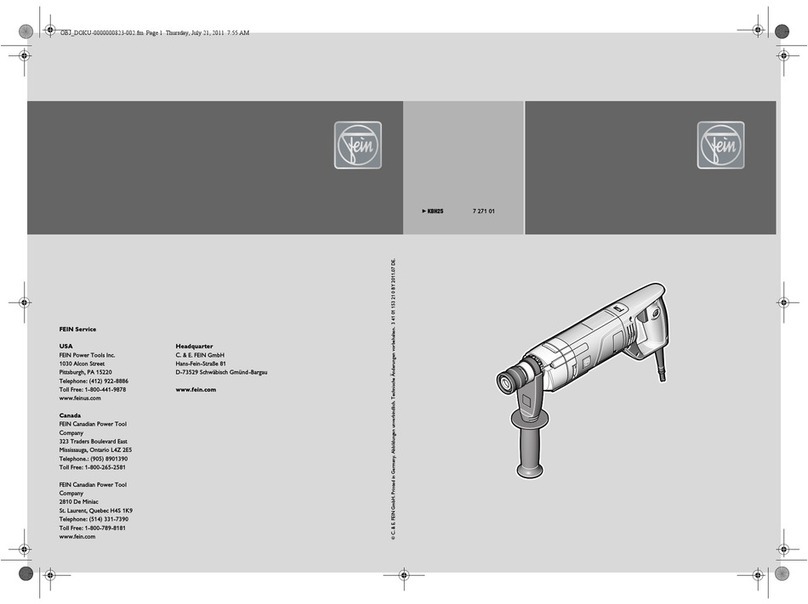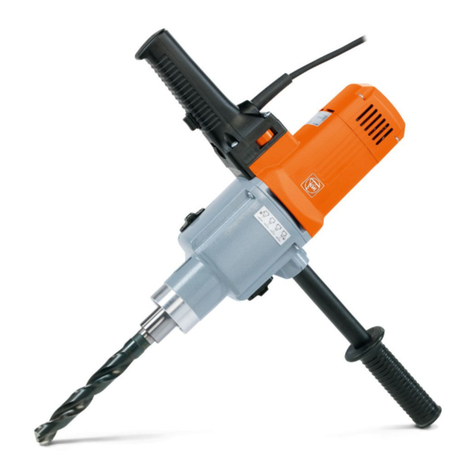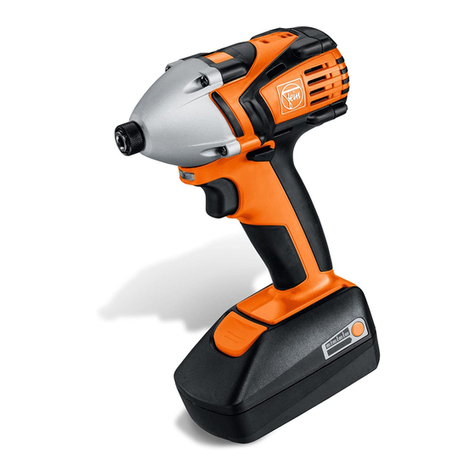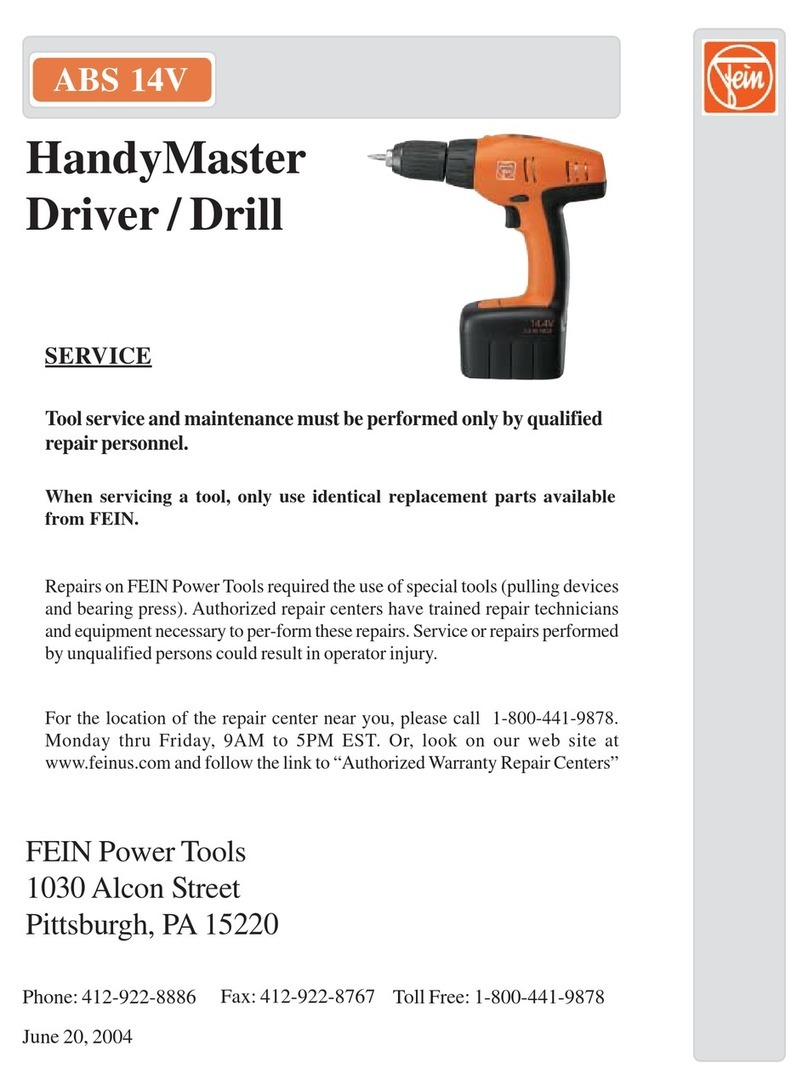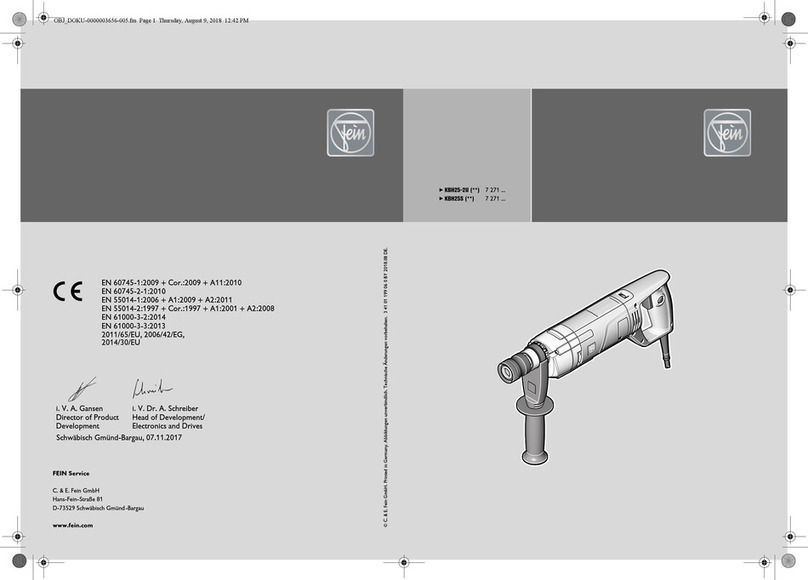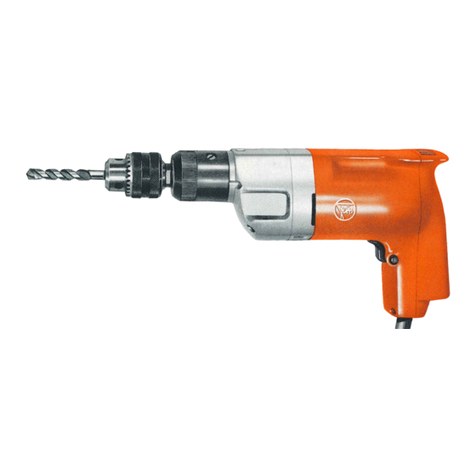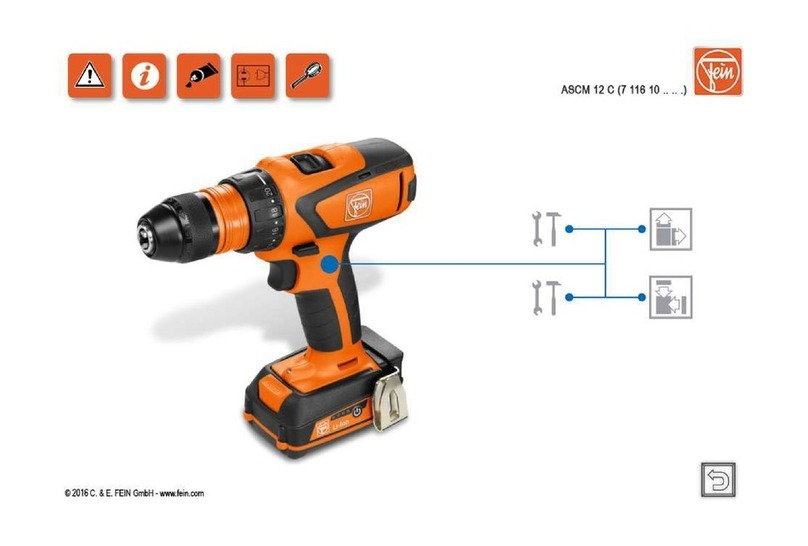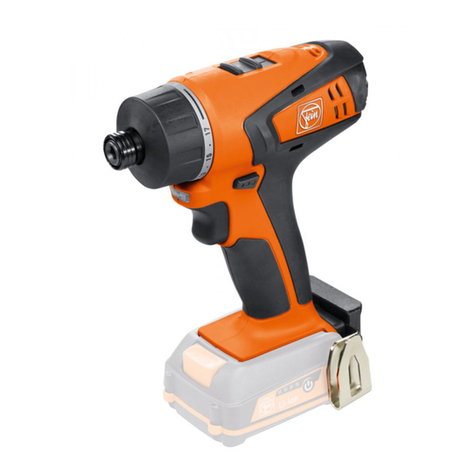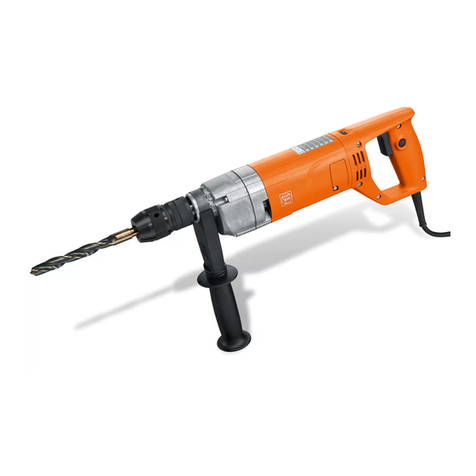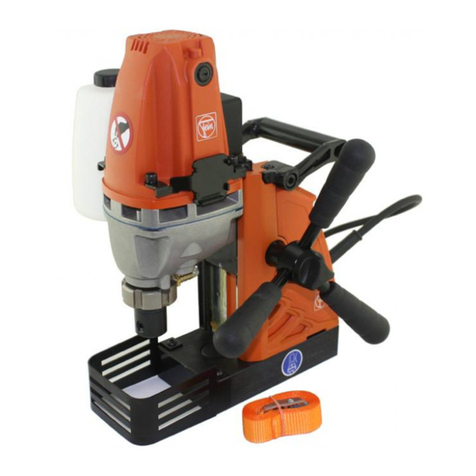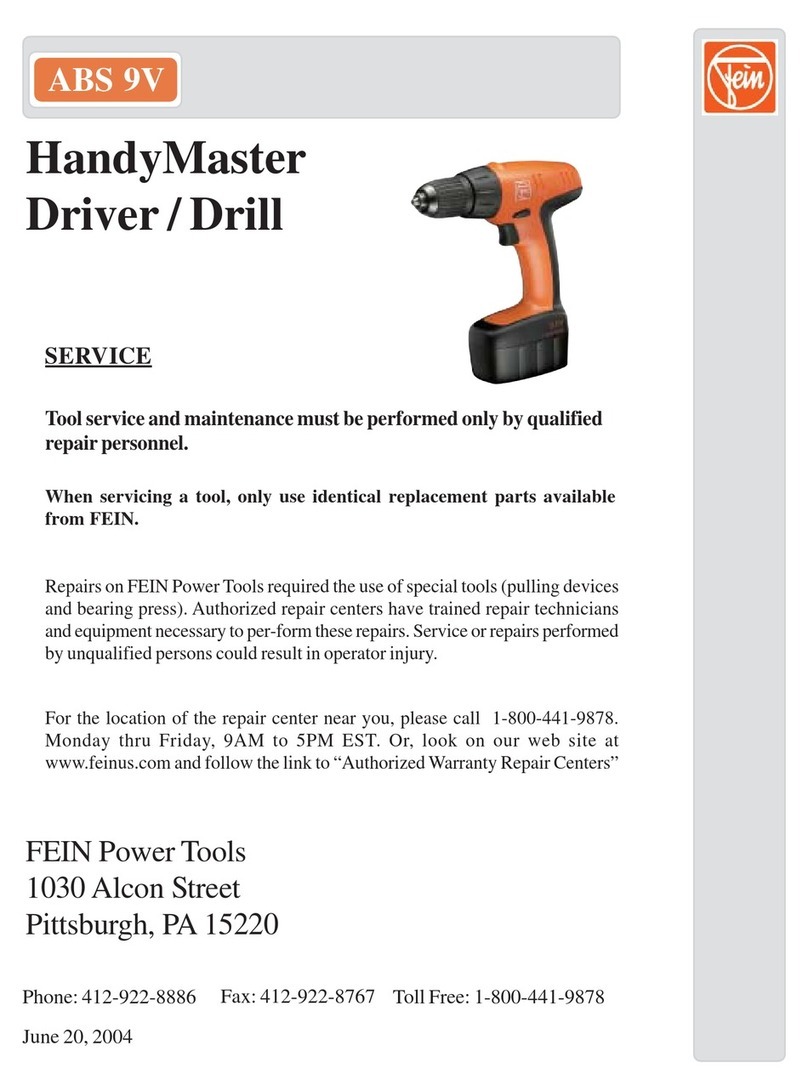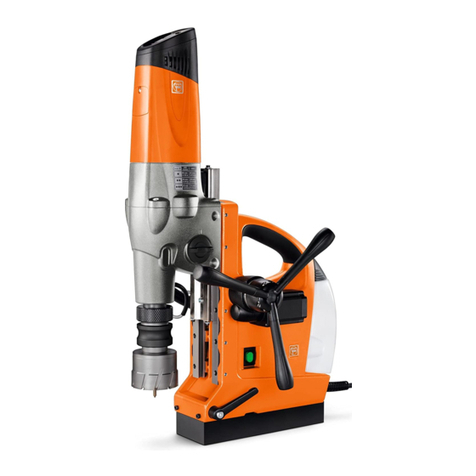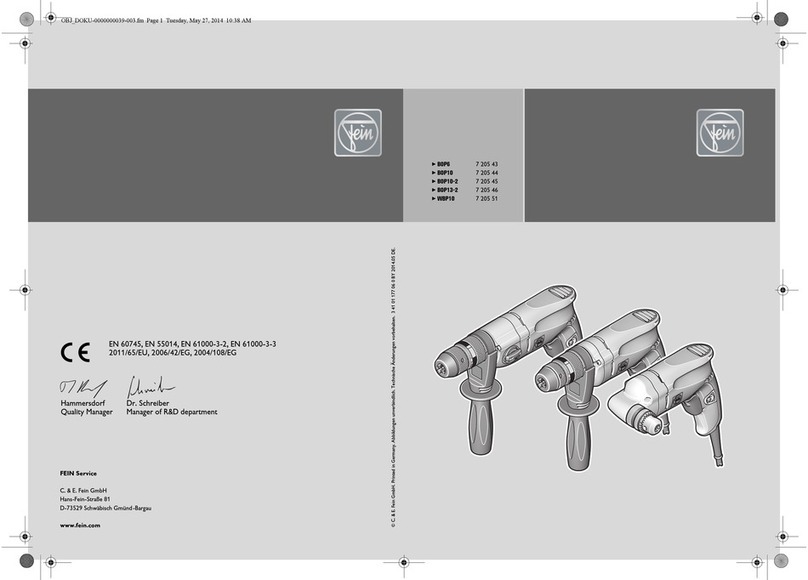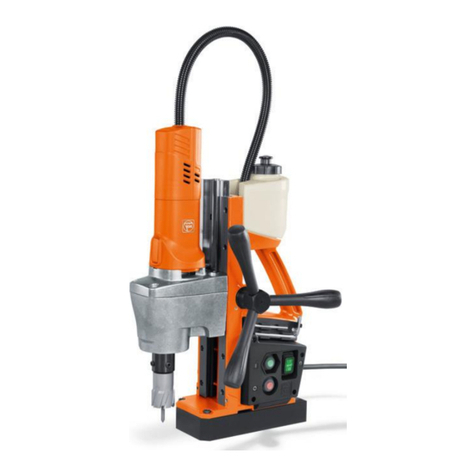
6en
Safety warnings for drills.
Safety instructions for all operations.
Hold the power tool by insulated gripping sur-
faces, when performing an operation where
the cutting accessory or fasteners may con-
tact hidden wiring or its own cord. Cutting
accessory contacting a “live” wire may make
exposed metal parts of the power tool “live”
and could give the operator an electric shock.
Safety instructions when using long
drill bits.
Never operate at higher speed than the maxi-
mum speed rating of the drill bit. At higher
speeds, the bit is likely to bend if allowed to
rotate freely without contacting the work-
piece, resulting in personal injury.
Always start drilling at low speed and with
the bit tip in contact with the workpiece. At
higher speeds, the bit is likely to bend if
allowed to rotate freely without contacting
the workpiece, resulting in personal injury.
Apply pressure only in direct line with the bit
and do not apply excessive pressure. Bits can
bend causing breakage or loss of control,
resulting in personal injury.
Special safety instructions.
Beware of any concealed electric cables, gas
or water conduits. Check the working area
before commencing work, e. g. with a metal
detector.
Wear personal protective equipment. Depend-
ing on application, use face shield, safety
goggles or safety glasses. Where appropriate,
wear dust mask, hearing protectors, gloves
and workshop apron capable of stopping
small abrasive or workpiece fragments. The
safety glasses must be capable of protecting
against flying particles generated by the vari-
ous operations. Prolonged exposure to high
intensity noise may cause loss of hearing.
Secure the work piece firmly. A work piece
that is gripped tightly in a clamping device or
vice, is more secure than if held by hand.
Hold the power tool firmly. High reaction
torque can briefly occur.
Do not work materials containing magnesium.
Danger of fire.
Do not work CFP (carbon-fiber-reinforced
polymer) and materials containing asbestos.
These materials are considered carcinogenic.
Do not rivet or screw any name-plates or
signs onto the power tool. If the insulation is
damaged, protection against an electric shock
will be ineffective. Adhesive labels are recom-
mended.
Do not use accessories which are not specifi-
cally designed and recommended by the
power tool manufacturer. Safe operation is
not ensured merely because an accessory fits
your power tool.
Clean the ventilation openings on the power
tool at regular intervals using non-metal
tools. The blower of the motor draws dust
into the housing. An excessive accumulation
of metallic dust can cause an electrical hazard.
Never look or stare into the light of the power
tool's lamp from a short distance. Never point
the light of the lamp into the eyes of other
persons in close vicinity. The radiation pro-
duced by the lamp can be harmful for the eye.
Do not direct the power tool against yourself,
other persons or animals. Danger of injury
from sharp or hot application tools.
Use and handling of the battery (bat-
tery pack)
To avoid hazardous situations such as burns,
fire, explosion, skin injuries, and other inju-
ries when handling the battery, observe the
following instructions:
Batteries must not be disassembled, opened
or reduced in size. Do not subject batteries to
mechanical impact or shock. Hazardous
vapours and fluid can escape in case of dam-
age and improper use of the battery. The
vapours can irritate the respiratory system.
Liquid ejected from the battery may cause
skin irritations or burns.
When battery fluid from a damaged battery
has come into contact with objects close by,
check the respective components, clean them
or replace them as required.
Keep the battery away from heat and fire. Do
not store the battery in direct sunlight.
OBJ_BUCH-0000000367-001.book Page 6 Thursday, February 14, 2019 2:50 PM

